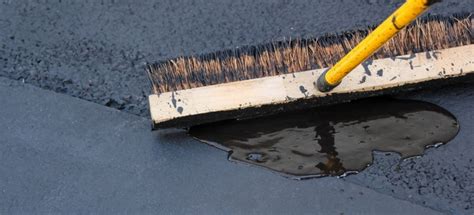The Complete Guide to Driveway Sealant Drying Time
A freshly sealed driveway looks fantastic, protecting your investment and enhancing curb appeal. But the crucial question remains: how long does driveway sealant take to dry? The answer, unfortunately, isn't a simple number. Drying time depends on several factors, and understanding these is key to ensuring a long-lasting, beautiful finish. This comprehensive guide will walk you through everything you need to know about driveway sealant drying time, helping you avoid costly mistakes.
What Factors Affect Driveway Sealant Drying Time?
Several factors significantly influence how long your driveway sealant needs to cure completely:
-
Type of Sealant: Different sealants have different formulations. Asphalt-based sealants generally require longer drying times than acrylic or water-based options. Check the manufacturer's instructions on the specific product you've chosen – this is the most reliable source of information.
-
Weather Conditions: This is arguably the most impactful factor. High temperatures and direct sunlight accelerate drying, while cooler temperatures, humidity, and rain significantly prolong the process. Wind can also affect drying time; strong winds can help evaporation but may also cause the sealant to dry unevenly.
-
Thickness of Application: A thicker coat of sealant will naturally take longer to dry than a thin coat. Aim for an even, thin application to ensure uniform drying and prevent cracking.
-
Porosity of the Driveway: A porous driveway surface will absorb more sealant, potentially increasing drying time. Older, more weathered driveways often exhibit higher porosity.
-
Ambient Air Temperature: The surrounding air temperature dramatically impacts evaporation. Cooler temperatures slow drying, while warmer temperatures speed it up.
How Long Does Driveway Sealant Typically Take to Dry?
While there's no one-size-fits-all answer, here's a general guideline:
-
Initial Tack-Free Time: Most sealants will become tack-free (meaning you can walk on them without sticking) within a few hours to a day. However, this doesn't mean they are fully cured.
-
Full Cure Time: Full cure time, when the sealant is fully hardened and resistant to damage, typically ranges from 24 to 72 hours (1-3 days). Again, this depends heavily on the factors mentioned above. Always refer to your sealant's specific instructions for the most accurate timeframe.
-
Driving on the Driveway: Avoid driving on your newly sealed driveway for at least 72 hours (3 days), or longer if the manufacturer recommends it. Driving before full curing can damage the sealant, causing peeling, cracking, and premature wear.
How to Determine if Your Driveway Sealant is Dry Enough
Don't rely solely on the estimated drying time. Test the sealant's dryness by gently pressing a clean piece of plastic sheeting onto the surface. If it doesn't stick, it’s likely dry enough to walk on (but still may not be fully cured).
What Happens if it Rains Before the Sealant Dries Completely?
Rain during the drying process can seriously compromise the sealant's effectiveness. It can dilute the sealant, causing it to peel or become uneven. If rain is expected, postpone sealing your driveway until the forecast improves. Consider using a sealant that's less susceptible to rain damage if you live in a region with frequent rainfall.
What if My Driveway Sealant is Taking Too Long to Dry?
If your driveway sealant is taking significantly longer to dry than the manufacturer suggests, consider these possibilities:
- Weather: Prolonged periods of low temperatures, high humidity, or rain can severely delay drying.
- Application: A thicker-than-recommended application may also prolong drying.
- Driveway condition: An exceptionally porous driveway may absorb more sealant, slowing the drying process.
Conclusion: Patience is Key
Sealing your driveway is an investment in its longevity. By understanding the factors that influence drying time and following the manufacturer's instructions, you can ensure a beautiful, long-lasting result. Patience is key; allowing ample time for full curing is vital for the sealant's effectiveness. Rushing the process can negate your efforts and lead to costly repairs down the line. Remember to always consult the specific instructions provided with your chosen driveway sealant product for the most accurate and reliable drying time information.

